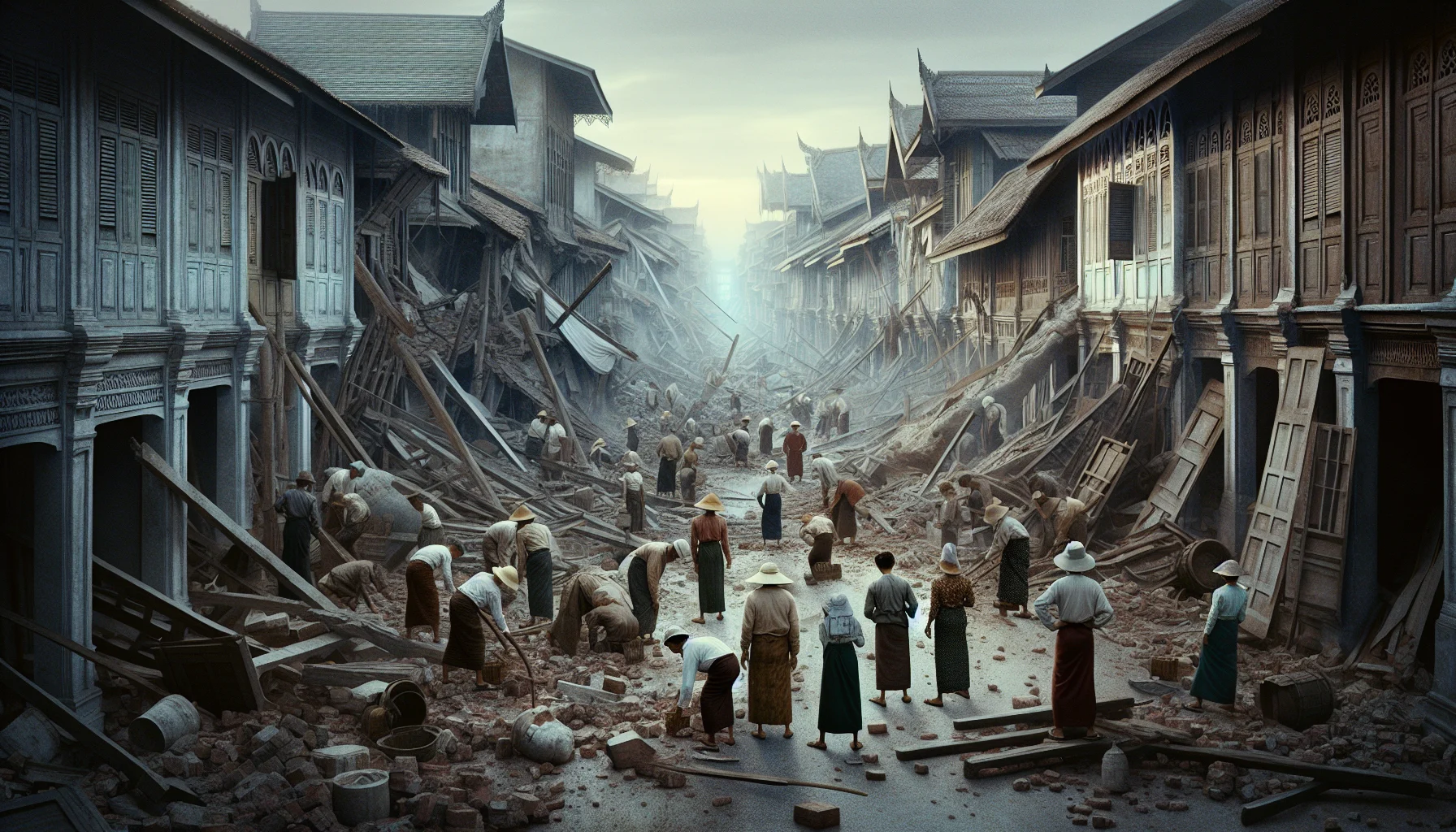
1930 Bago Earthquake
by: The Calamity Calendar Team
May 5, 1930
Tremors of Destiny
In the early morning hours of May 5, 1930, life around the quiet Burmese town of Bago began as it often did. The rhythms of daily life whispered their gentle cadence against the backdrop of a society neatly tucked into the folds of British colonial rule. Farmers rose with the dawn, children prepared to attend lessons under the stern yet caring guidance of local teachers, and merchants arranged their wares with pride in bustling markets. But somewhere deep within the earth, tension brewed, stirring the subterranean waters of seismic wrath.
Seismic Setting
Burma, as it was then known, occupied an uneasy truce with nature's formidable forces. Straddling the Indo-Myanmar tectonic boundary, this region was no stranger to the occasional quiver of the ground beneath its feet. The Indo-Australian and Eurasian plates had long engaged in their age-old dance—an invisible waltz of geological titans. Yet, the burgeoning settlements, largely lacking in infrastructure designed to withstand nature's fury, stood at the mercy of these elemental belligerents.
Dawn Unraveled
At precisely 10:02 AM, a seismic jolt of 7.3 magnitude tore through the earth's crust near Bago, sending its fearsome shiver outward like ripples across a pond. This was no ordinary tremor. In mere moments, colonial structures cracked under the enormous strain, and the earth itself seemed to lose its solidity, buckling as if in submission to a greater force.
From Yangon, some 80 kilometers away, witnesses recounted the ground behaving like liquid. Buildings—testaments to British colonial architecture—crumpled amidst plumes of dust. The earth's tremors were pervasive, reaching as far as Thailand and India, reminding all within their grasp of nature's indiscriminate destructive potential. But it was in Bago that nature's rage etched its deepest scars.
Scars of Survival
In the quake's aftermath, the toll was staggering. More than 500 lives were lost. Grief, like the rubble that buried entire neighborhoods, settled thickly over Bago. Families mourned the absence of loved ones, their echoing laments a stark contrast to the stunned silence that followed the quake's violent chorus.
The town of Bago—once a word that conveyed prosperity and peace—now conjured images of devastation. Houses that had stood for generations lay dismembered, their roofs at rest upon shattered walls. Roads twisted beyond recognition snaked under the sun, sunken and cracked. The heart of the community now pulsed weakly beneath a heavy veil of dust and debris.
Thanks for subscribing!
Rebuilding from Ruin
Response to the disaster, though swift, was hampered by a lack of infrastructure and preparedness. The British colonial administration summoned military and administrative resources in haste. Swiftly constructed tents dotted the landscape, offering what solace they could provide to those displaced by the quake. Medical staff worked tirelessly, their hands stained with the dual blessings and burdens of care.
Efforts to rebuild were monumental. The focus shifted slowly from immediate relief to long-term recovery. Under the weight of colonial economic constraints, changes came at a crawl, but they came nevertheless. The calamity served as a wake-up call—the need for earthquake-resistant construction practices gained urgency, even if the pace of implementation left much to be desired.
Lessons Carved in Stone
In the years that followed, the events of that May morning faded from the foreground of public consciousness, yet they etched new paths in scientific understanding. Geologists have since combed through the layers of history and earth alike, piecing together the puzzle of seismic activities inherent to the region. Advances in technology and seismology have cast new light on the earthquake's magnitude and impact, adding invaluable data to the historical earthquake record.
A Quake's Quiet Echo
Today, the legacy of the 1930 Bago Earthquake is more than a tale of tragedy; it is a testament to resilience in the face of nature’s unyielding powers. The channels of knowledge carved through pain have become conduits of progress, aiding in the ongoing quest to safeguard communities against future shocks.
In the earthquake’s solemn wake, one can still hear echoes—a reminder of the earth's capacity to reshape not just landscapes, but lives. Bago stands as a poignant witness to the ever-present need for resonance between mankind and the forces that govern the land on which they dwell. The story endures, inscribed in textbooks and hearts alike, a call to remember, to prepare, and to hope.
Stay in the Loop!
Become a Calamity Insider and get exclusive Calamity Calendar updates delivered straight to your inbox.
Thanks! You're now subscribed.